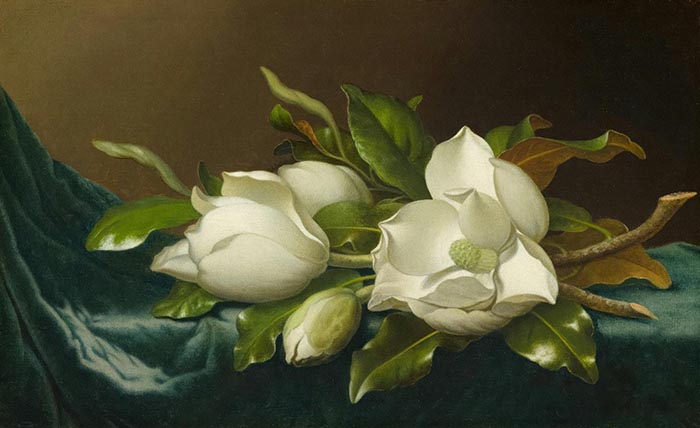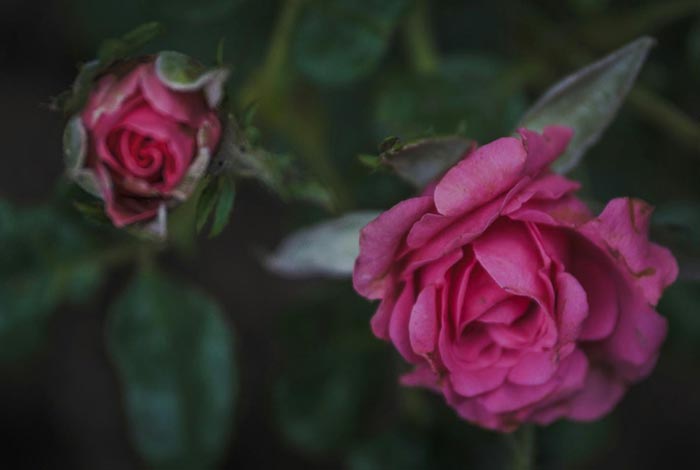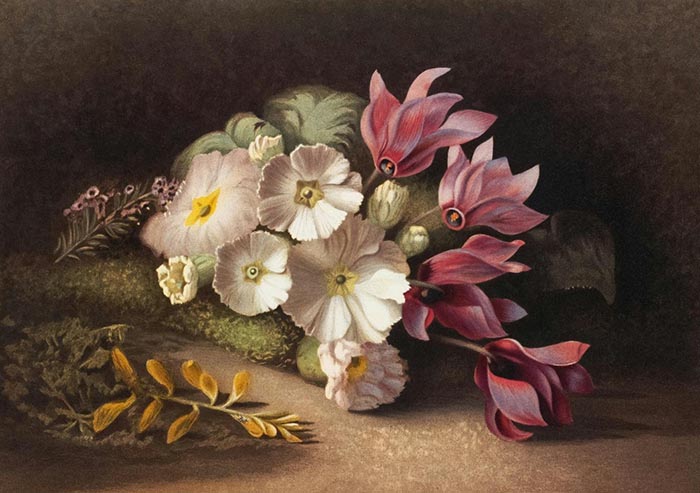Florals never really left the runway—yet something about the moment feels different. What used to be a once-a-year burst of blossoms in spring has evolved into a year-round language of shape, colour, and craft.
Petals appear as sculptural armour, embroidery that catches light like dew, and prints that move with the body like wind through a garden. This is not “florals for spring” (groundbreaking, etc.); it’s florals as a design system capable of carrying a collection from the first thaw through high summer, into crisp autumn and the heart of winter. Here’s how the industry is rediscovering flowers—materially, symbolically, and commercially—across all four seasons.
Spring: From Wallpaper to Architecture
Spring remains fashion’s natural home for the flower, but the aesthetic has sharpened. Instead of sweet, scatter-print dresses alone, we’re seeing botanical architecture: corsages scaled to the shoulder, circle-cut panels that unfold like tulip petals, and laser-cut leather mimicking lace leaf skeletons. The key shift is construction. Designers are using spiral seaming, godets, and origami pleats to copy how a bloom opens.
Colour-wise, the palette has cooled. Powdered lilac, chilled mint, and soft butter yellow relax the eye after a saturated winter. Styling tilts minimal—bare legs, clean hair, a single statement bloom pinned to a trench. The effect is studio-modern, not cottagecore. It’s a reminder that flowers can be precise, even graphic, when the lines are clean and the print scale is controlled.
How to wear it now: Pair a structural floral skirt with a men’s shirting stripe. Add a narrow belt in oxblood or espresso to prevent the look from floating away. For footwear, think polished flats or sharp kitten heels; the pointy toe punctuates all that softness.
Summer: Sun-Hungry Prints and Swim-to-Street Bloom
In the heat, fashion leans into solar florals—blooms that seem to drink light. Think saturated hibiscus and bird-of-paradise prints, oil-slick satins, and glossy technical swim jersey used as bodysuits under linen trousers. Importantly, the tropical mood is cut with tailoring: camp shirts with neat lapels, pencil skirts with a side-slit, or a suiting vest over a bralette. The discipline keeps prints from reading touristy.
Accessories carry major floral energy. Raffia rosettes on bucket bags; resin bangles cast with dried petals; sandals that twist like vines around the instep. The micro-trend to watch is wet-look petals—PVC appliqués, crystal drops, slick hair—suggesting a garden after rain.
Beauty notes: Skin looks sun-warmed but not shiny. Coral and papaya tones pair beautifully with green prints; a single swipe of leaf-coloured liner is editorial without effort. Hair scarves in botanical silk finish the idea and protect colour from UV in one shot.
Autumn: The Herbarium Effect
When the air cools, flowers don’t disappear; they flatten. Designers translate pressed-flower scrapbooks into fashion with matte jacquards, needle-punched felt, and intarsia knits in russet, bronze, and marigold. Instead of large blossoms, motifs become silhouettes—ferns, seed pods, ginkgo fans—rendered like shadow play across wool and cashmere.
The tailoring becomes leaf-like: soft-shouldered jackets with rounded hems, capes that fall in scalloped layers, skirts with petal peplums. Florals arrive as texture, not just print, and merge effortlessly with leather (think dry, vegetal browns) and corduroy. It’s less about spring’s optimism and more about memory—a garden archived.
How to wear it now: Choose one textured floral piece (a pressed-flower jacquard coat, a felted skirt) and build the rest in solids. Add burnished metal jewellery—antiqued brass or copper—to echo autumn light. Dark green tights feel new again.
Winter: Ice Blooms and Night Gardens
The season of knitwear and storm-proof coats might seem hostile to florals, but winter is where the boldest experiments are happening. Designers are building ice blooms—florals in moody, nocturnal palettes, appliquéd with beads, mirrored paillettes, or tiny crystals that catch streetlight. Velvet hosts oversized, blown-out roses; satin is quilted like camellia petals; technical outerwear gets tonal floral quilting that reads abstract until you’re close.
We also see armoured florals: leather blossoms moulded on the bust; metallic thread work tracing thorns; brooches that look like frozen roses. The bloom becomes emblematic, almost heraldic romance, but with grit. It pairs naturally with stompy boots and shearling, creating contrast that photographers love.
How to wear it now: Commit to one dramatic piece (a night-garden dress, a brooch you can see from two tables away) and keep everything else pragmatic: black turtleneck, wool tights, lug-sole boots. Your flower is the light in the room.
Couture & Red Carpet: The Language of Handwork
On the highest tiers, florals have become shorthand for hours of labour. Petals are formed from bias-cut organza, hand-rolled and whip-stitched; feathers are trimmed to stamen-thin filaments; 3D-printed lattices cradle silk blooms. The point is not just beauty—it’s proof of hand. On carpets, the flower communicates romance without cliché when the silhouette is modern (column, halter, plunge) and the embellishment is sculptural, not sprinkled.
For stylists, the play is scale. A single peony-sized shoulder piece on a sleek gown tells the entire story; a field of tiny florals reads sweet but can wash out on camera. Keep jewellery minimal and choose a bag with a strong shape (frame clutch, box minaudière) so the look lands as intentional, not decorative.
Menswear: Beyond the Liberty Shirt
Menswear’s quiet revolution is here: botanical tailoring. Florals show up as shadow jacquards on black suits, tone-on-tone brocade vests, or hand-embroidered collar tips. The camp-collar floral shirt still works, but the interesting movement is tailoring that blooms only when light hits it. Think of it as the sartorial equivalent of a midnight flower.
Shoes and ties follow suit. A silk tie with a single woven vine feels confident; a loafer embossed with leaf veins looks custom. Streetwear, meanwhile, embraces vine graphics and tattoo-inspired botanicals across varsity jackets and hoodies. The rule is balance: pair a floral statement with clean trousers and strong footwear.
Fabrics & Techniques: From Garden to Lab
The craft behind the trend matters. We’re seeing:
- Devoré and burnout to create translucent petal windows in velvet and satin.
- Cording and trapunto that puff quilted petals on denim and nylon.
- Bonded mesh petals on knits that won’t fray, making floral sweaters practical and dramatic.
- Digital printing with placement mapping, so large blooms sit exactly at the bodice or hem and align through seams.
- Sustainable botanic: dyes made from marigold, madder root, or food waste (onion skins, avocado pits), plus deadstock floral fabrics cut in fresh shapes.
The technology angle proves florals are not nostalgia—they’re a frontier for innovation.
Retail & Merchandising: Why Florals Convert
From a Florist’s perspective, flowers are high-conversion motifs. Customers recognize them instantly, they photograph well, and they carry emotional charge (joy, romance, nostalgia). Smart retailers stagger floral deliveries by mood rather than month: airy graphics for spring drops, saturated tropics for resort, herbarium textures for fall, night florals for holiday.
On the shop floor, florals benefit from zoning. Hang abstract or monochrome prints near tailoring for the “modernist” customer; place painterly pieces near knitwear for the “romantic.” In e-commerce, show movement—short videos of skirts catching wind, close-ups of 3D petals—so customers can read quality. Include care tips (store flat, steam from inside, protect embellishment with tissue) to reduce returns.

Beauty & Hair: Bloom, Don’t Overgrow
Beauty’s best floral references are edited. A cool-rose lip with a neutral eye anchors spring looks; sun-struck gloss and bronzy lids work for high summer prints. Autumn invites cinnamon liner and moss-green accents; winter loves plum mouths and vinyl-black lashes beside crystalline appliqués.
Hair follows silhouette: sleek buns to counter puffy-sleeve florals; brushed-out waves with tropical prints; soft chignons beneath winter brooches. Skip literal flower crowns unless the brief is editorial; a single silk camellia at the nape is infinitely chicer.
Sustainability: Growing Better
If the garden metaphor means anything in 2025, it should include responsible cultivation. Florals are a natural frame for sustainable practice—botanical dyes, organic fibres, recycled PET chiffon, rental models for occasion wear, repair programs for embellished pieces. Designers are offering modular blooms that snap off for cleaning or swapping, extending garment life and reducing waste.
Consumers can read labels for fibre content, country of origin, and dye method; they can also treat florals as long-wear investments. A great night-garden dress will outlive ten micro-trends. Buy the best you can afford, care for it, and tailor for longevity.

The New Floral Wardrobe: A Year-Round Capsule
To translate runway to real life, build a four-season floral capsule:
- Spring: A crisp floral midi skirt in a cool pastel with a precise silhouette.
- Summer: A saturated tropical camp shirt or slip that layers under tailoring.
- Autumn: A textured floral jacquard coat or cardigan in leaf tones.
- Winter: One dramatic night-floral piece—dress, brooch, or crystal-studded knit.
- Accessories: A botanical silk scarf, a resin petal earring, and a vine-strapped sandal.
- Menswear pick: Tone-on-tone floral jacquard vest for suiting or denim.
Rotate these pieces across neutrals—ink, olive, bone, chocolate—and you’ll have bloom on demand without repeating the same look.
Conclusion: Why Flowers, and Why Now
Fashion is cyclical, but the renewed obsession with florals is reconnection. In unstable times, flowers offer a vocabulary that is both familiar and elastic. Designers can encode technical prowess (a perfectly moulded petal), cultural storytelling (regional botanicals), and sustainability (plant dyes) in a single motif. For wearers, flowers are the rare print that can swing from playful to solemn, boardroom to ballroom, January to December.
The season’s message is clear: let florals move with you. Choose the line that suits your body, the palette that suits your mood, and the craft that honours the maker. Whether you step into a pressed-flower coat in April or a crystal-edged camellia dress in December, you’re not repeating an old script—you’re writing a living one. And like any great garden, it’s always in bloom.
##





